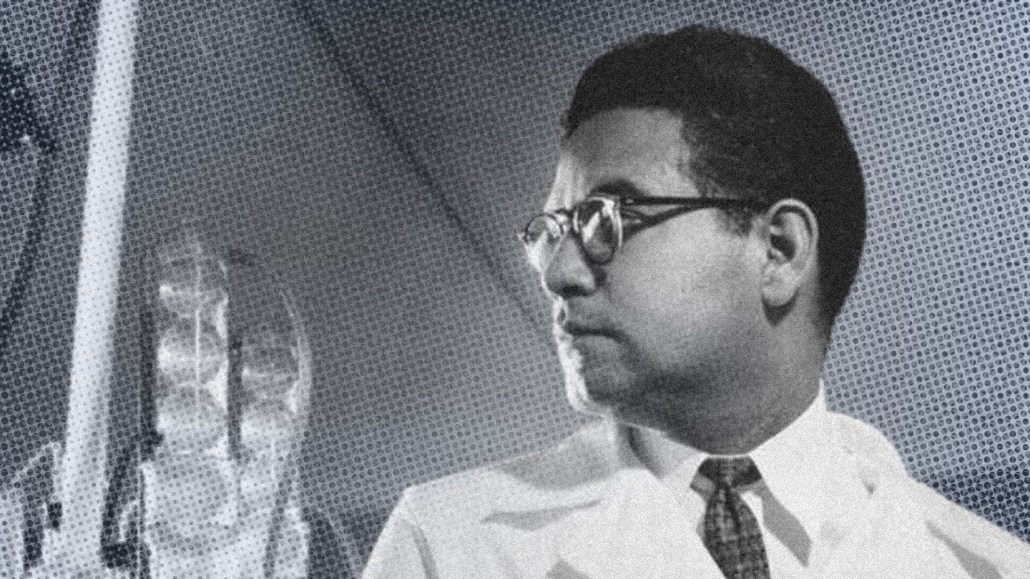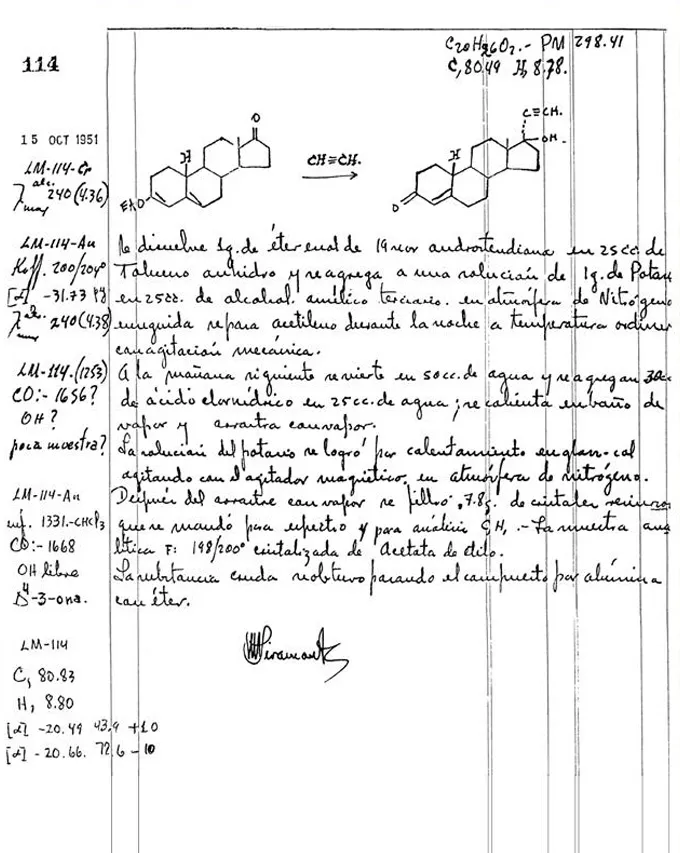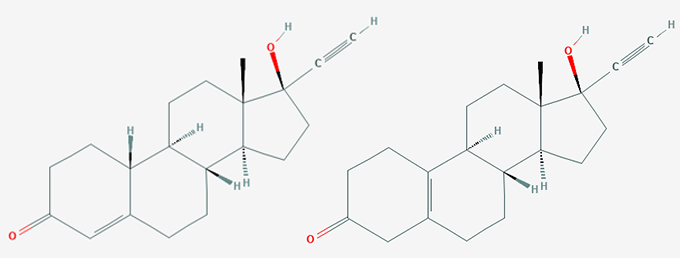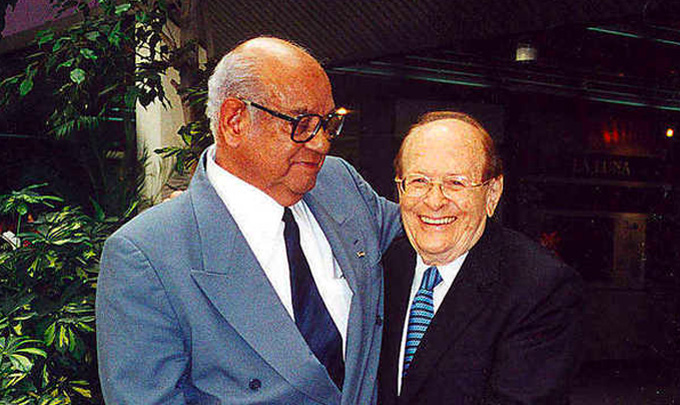Luis Miramontes helped enable the sexual revolution. Why isn’t he better known?
At 26, Miramontes synthesized an active ingredient in one of the first birth control pills

In 1951, at the age of 26, Luis Miramontes (pictured here not long after) made one of the first active ingredients in birth control pills.
Courtesy Miramontes-Vidal family, official archive, Physics Institute of the National Autonomous University of Mexico (UNAM)
When Mexican scientist Luis Miramontes signed his lab notebook on October 15, 1951, he didn’t know he was documenting history.
That day, he made a new molecule — norethindrone. Derived from the wild Mexican yam that locals call barbasco, norethindrone became one of the first active ingredients in birth control pills. “The pill” gave women control over when they had children and let men and women enjoy sex without the chance of reproduction, thus ushering in seismic social change.
Miramontes’ notebook page has been immortalized in books and articles by his former supervisor, Carl Djerassi, as well as reporters. Yet compared with Djerassi and others who contributed to the pill, Miramontes attained little recognition, says Gabriela Soto Laveaga, a historian of science at Harvard University and author of Jungle Laboratories: Mexican Peasants, National Projects, and the Making of the Pill. “It isn’t until recently that Miramontes has even been spoken about.”

Luis Ernesto Miramontes Cárdenas was born in 1925, in the wake of the Mexican Revolution. He grew up surrounded by strong female role models, including his aunt María Dolores Cárdenas Aréchiga, a onetime major in Pancho Villa’s army who later joined the army of teachers bringing education to the remotest corners of Mexico. Young Miramontes decided on a career in science. By the late 1940s, he was studying chemical engineering in Mexico City.
It was a good time and place to be a skilled molecule maker. The Mexican company Syntex was blowing away global competition at producing low-cost hormones to treat diseases. The reason was the Mexican yam, Dioscorea mexicana, which contained large quantities of a precursor that could be used to make several hormones. In 1949, Miramontes became one of a group of researchers assigned to Syntex projects as part of an agreement with the National Autonomous University of Mexico, or UNAM. Djerassi, an Austrian-born American chemist, “liked the way I worked,” Miramontes said in a 2004 interview. “If he wanted something to turn out well, or to be verified, he’d give me the job.”
Progesterone was just such a challenge. Doctors used it to prevent certain types of miscarriages, among other things, but it had to be injected to work. Djerassi and Syntex director George Rosenkranz wanted a progesterone pill. Following leads from other scientists, Syntex made a modified progesterone derived from the yam, one designed to survive the digestive tract and have more biological activity than progesterone. That was norethindrone. Miramontes figured out the last step in its recipe, adding a crucial carbon-carbon triple bond.
Meanwhile, experts and activists made the connection between progesterone and birth control, because progesterone prevents ovulation during pregnancy. This paved the way for norethindrone to be used in contraception.

However, it didn’t end up in the first pill. A year after Syntex reported norethindrone, chemists at rival firm Searle, an American company, reported their own compound, norethynodrel. It differed from norethindrone by the position of just one carbon-carbon double bond, and adding stomach acid converted it to norethindrone. Gregory Pincus, a codeveloper of the first pill, chose Searle’s compound. But norethindrone had a longer-lasting impact. Searle’s compound is no longer marketed. In 2018, norethindrone was still the 138th most prescribed drug in the United States.
Why, then, did Miramontes remain an obscure figure? He was a student at a time when science was especially hierarchical. And the fact that Searle beat Syntex to market cut Mexico — and Miramontes — out of the narrative. Perhaps renown was not Miramontes’ preference. His son Octavio Miramontes Vidal says: “My father was a quiet individual. He was not someone who was seeking fame.” In contrast, Djerassi “did not aspire to modesty,” according to an obituary.

This article is part of a series highlighting some of the biggest advances in science over the last century. For more on the history of our understanding of human reproduction, visit Century of Science: The mystery of reproduction.
Miramontes Vidal says that his father was bilingual, but Miramontes didn’t choose to write his story in English. Others did: Pincus mentioned Syntex in his book’s acknowledgements, but not its chemists. Djerassi credited Miramontes in his works, but called Miramontes “a young Mexican chemist” when he himself was less than two years older. “It’s about who controls the narrative, and the person who controls the narrative of the invention of the pill in the United States in many ways becomes Djerassi,” says Soto Laveaga.
Miramontes ended up accepting a director position at Searle to earn more money to support his growing family; he and his wife had 10 children. From there, the university seemed to close its doors, says his son Miramontes Vidal, who is a physicist at UNAM. Despite completing all requirements, Miramontes was never awarded a Ph.D. He was not a member of the Mexican Academy of Sciences, which was cofounded by one of his mentors at UNAM.
Miramontes’ parish priest threatened his wife with excommunication, Miramontes Vidal says — the Catholic Church’s influence in 1960s Mexico can’t be overstated. Miramontes perhaps hinted at this when he wrote that the pill “generated profound, serious moral questions in some sectors of society, and obtuse, reactionary attitudes in others.”

Times changed. In the 1980s, Miramontes won awards from Mexican state governments and the Mexican Chemical Society. In 2010, the president of the Mexican Academy of Sciences ranked Miramontes’ work as one of Mexico’s three top scientific contributions. But the damage had been done. Miramontes Vidal says that when his father passed away in 2004, newspapers didn’t know who he was. Word of his death traveled so slowly that it took the American Chemical Society two years to issue an obituary.
Miramontes’ own writings suggest satisfaction with his legacy. “I consider myself lucky,” he wrote in 2001, “because the researcher, in their zeal to discover the truth at the outset of their work, on many occasions doesn’t realize what they will find.”
Sign up for our newsletter
We summarize the week's scientific breakthroughs every Thursday.






